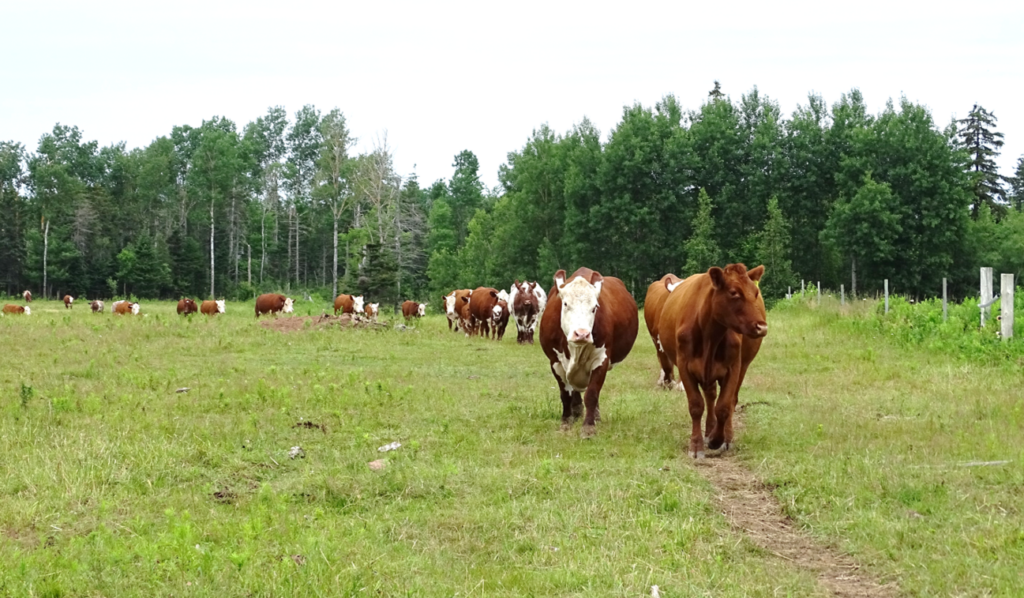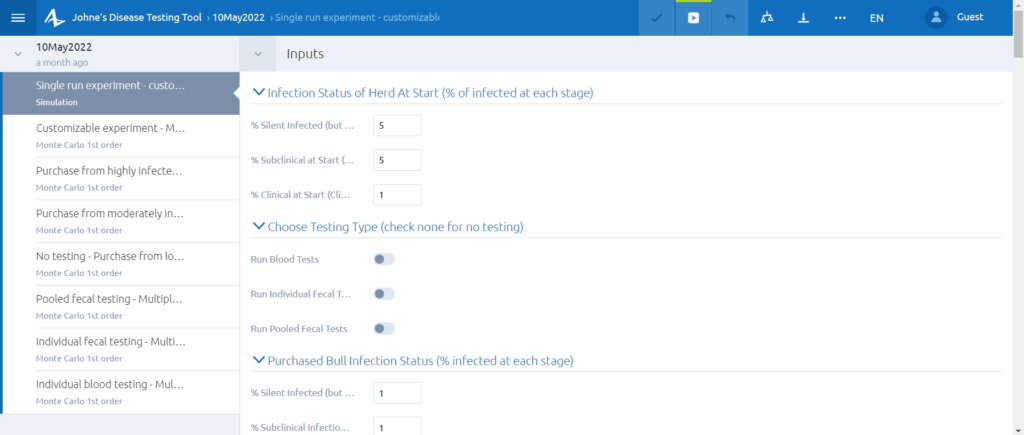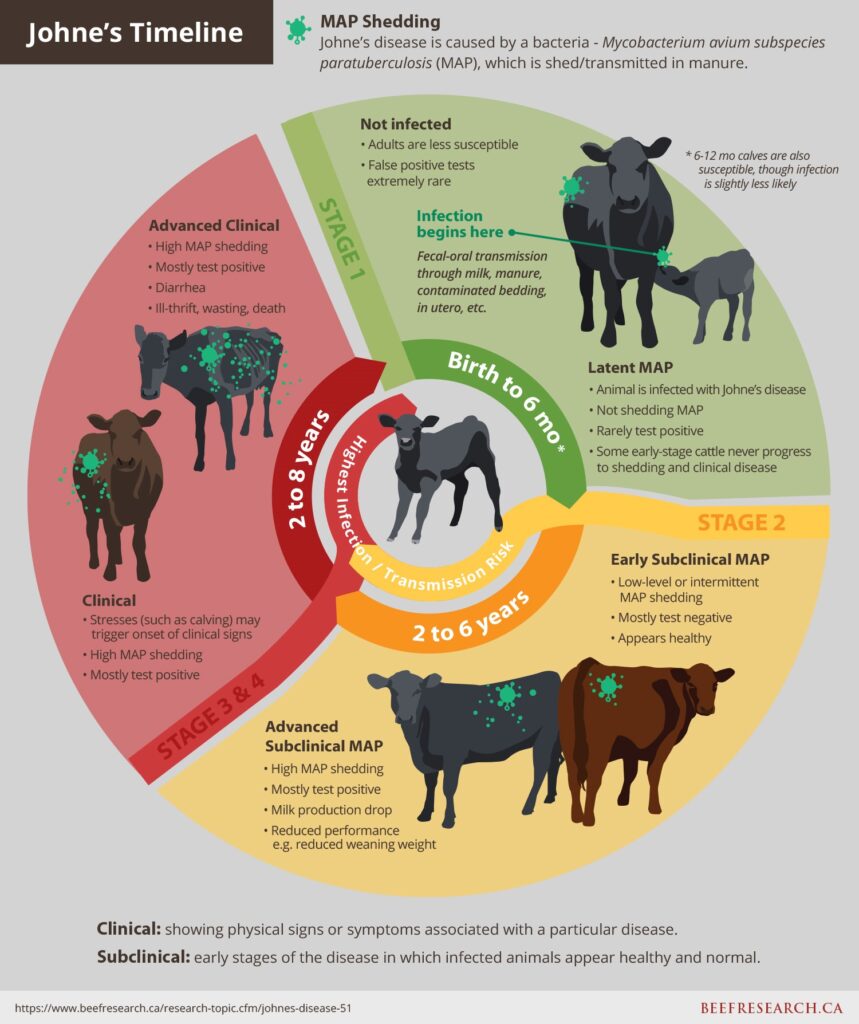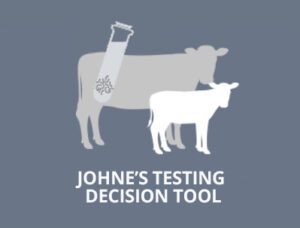Stopping Johne’s Disease in Its Tracks: What’s the Best Testing Strategy for Your Herd?

Johne’s disease has been a lingering threat to the beef industry for decades, and cases appear to be on the rise. It is often difficult to measure these increases, because infected herds can go unnoticed due to long latent, or dormant, infection periods and non-specific symptoms.
However, missing a Johne’s outbreak can have significant long-term implications. This includes increased replacement costs, decreased weaning weights, loss of important genetics and impacts on seed stock herds’ reputations.
There are several testing options for Johne’s disease with various costs associated with them; however, none are perfect. Many variables affect the ability of the tests to identify cows while they are actively shedding the disease, which is required for a positive test. It is challenging to determine the best testing strategy for any particular herd that balances accurate information and economics. But, a new interactive calculator is now available to help producers make informed decisions.
The Johne’s Testing Decision Tool
The Johne’s Testing Decision Tool was developed by a team led by Dr. Cheryl Waldner, the NSERC/BCRC Industrial Research Chair in One Health and Production-Limiting Diseases at the University of Saskatchewan. This interactive tool was designed to help producers and veterinarians evaluate various testing scenarios and options to get a clearer picture of what a management program can look like for their herd.
“This tool is not a crystal ball, but a means to map out the potential consequences of different testing and disease management options for beef herds. It will help you compare the relative costs and benefits of different options,” Dr. Waldner said during a recent BCRC webinar. The webinar walked listeners through important new information regarding this devastating disease and the new online decision-making tool.

According to Dr. Waldner, industry consolidation leading to comingling of smaller herds could be causing an increase in Johne’s risk. She says, “Seven times more beef producers are nearing retirement than are entering the industry, and that consolidation can highlight emerging challenges to disease control in cow-calf herds.”
Producers need to consider what can be done to minimize the risk of bringing diseases like Johne’s into a herd and how to manage once a disease presents itself.
“The biggest tool we have at our disposal is biosecurity. It isn’t only keeping disease out of your herd but controlling the spread once it’s there.”
– Dr. Cheryl Waldner
During the webinar, Dr. Waldner walked attendees through several mitigation strategies to help prevent the introduction of Johne’s and other diseases. She also shared how to control infection within a herd. (Skip to 11:15 in the webinar recording.)
Reducing the Johne’s Disease Risk in Young Calves
Young calves are at the highest risk of being infected with Johne’s disease. The following is a list of steps to help decrease and even eliminate the risk to that vulnerable age group. (Skip to 18:07 in the recording.)
- Reduce crowding and contamination of calving grounds
- Low density calving on grass
- Lots of clean bedding
- Clean udders
- Good drainage
- Buy animals from herds that know their Johne’s status
- Do not source colostrum from other herds (particularly dairy herds where Johne’s prevalence is relatively high)
- Consider testing your herd
Herd management practices and risk of calf loss
| Management choice | Outcome |
|---|---|
| Providing shelters for calves separate from cows | Mortality rate of 1.3 x lower |
| Moving cow-calf pairs to nursery pastures within 48 hours | Mortality rate of 1.3 x lower |
| Purchasing animals in the month prior to calving | Mortality rate of 1.3 x higher |
If you are seeing economic loss due to premature culling of symptomatic cows still in their breeding prime, decreased milk production or loss of genetics from preventative culling, because you suspect that Johne’s is present in your herd, it’s time to consider testing. While this can be a challenging process for producers and veterinary teams, it can help provide a road map for management strategies.
“Infectious animals don’t shed all the time; they may shed for a while and then stop and start again,” says Dr. Waldner. Coming up with a testing protocol can be difficult because of the unpredictability of shedding, the long asymptomatic period, the ability of the disease to survive in the environment and limitations of testing technologies.

Financial Insights for Johne’s Infected Herds
The financial impacts of Johne’s disease can shrink profit margins considerably, but testing is also time consuming and expensive. Dr. Leigh Rosengren, a veterinarian, epidemiologist and cow-calf producer in Saskatchewan, provided insight from her research on the financial impact for Johne’s-infected herds during the BCRC webinar. (Skip to 42:50 in the webinar recording.)
While there are multiple factors affecting the profitability of an operation, Dr. Rosengren says minimizing replacement costs is a key factor in a profitable approach. Goals vary among individual farm operations and can be as diverse as maintaining a reputation, decreasing disease prevalence, increasing or stabilizing profits, keeping testing costs down, record keeping and working with concurrent testing protocols. Finding a balance between on-farm goals and disease-controlling factors and associated costs will help determine a tailored approach to Johne’s management.
Regardless of Johne’s status of a herd, it is an emerging concern that all beef producers should be aware of. Simple management and testing practices can help minimize the prevalence of Johne’s in the national herd. “We can use good biosecurity programs to reduce the risk for many infectious diseases, not just Johne’s disease,” Dr. Waldner notes.
The development of the web-based interactive tool to inform Johne’s disease testing options in individual cow-calf herds was funded in part by the Beef Cattle Research Council. A full list of funders and research details are available in the project factsheet.
Interactive training sessions on how best to use the decision tool are available to interested veterinarians, technicians, extension staff and beef producers across Canada. To submit a request, contact info@beefresearch.ca.
More Johne’s Resources:
- Johne’s Testing Decision Tool (BCRC calculator)
- User Guide for Johne’s Testing Decision Tool
- Instructional Videos
- Johne’s Disease (BCRC webpage)
- Johne’s Disease: Cheap to Buy, Costly to Live With (BCRC article)
Click here to subscribe to the BCRC Blog and receive email notifications when new content is posted.
The sharing or reprinting of BCRC Blog articles is welcome and encouraged. Please provide acknowledgement to the Beef Cattle Research Council, list the website address, www.BeefResearch.ca, and let us know you chose to share the article by emailing us at info@beefresearch.ca.
We welcome your questions, comments and suggestions. Contact us directly or generate public discussion by posting your thoughts below.
